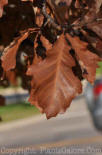|
|
|
 |
 |
  Around the world, it is hard to find
a more important group of trees than the oaks (Quercus
species). They are
native to the northern
temperate regions as well as
Asia. Oaks have alternate, simple leaves and produce
generally large, coarse textured trees. Around the world, it is hard to find
a more important group of trees than the oaks (Quercus
species). They are
native to the northern
temperate regions as well as
Asia. Oaks have alternate, simple leaves and produce
generally large, coarse textured trees.
Oaks native to America include:
|
Quercus alba
Q. agrifolia
Q. bicolor
Q. rubra maxima
Q. chrysolepis
Q. imbricaria
Q. laurifolia
|
Q. palustris
Q. macrocarpa
Q. montana
Q. phellos
Q. prinus
Q. velutina
Q. virginiana |
|
Some of the most common oaks grown in
woodlots or landscapes in the United States include:
1. English Oak - Q. robur
2. Daimyo Oak - Q. dentata
3. Mossycup Oak - Q. macrocarpa
4. Red Oak - Q. borealis
5. Pin Oak - Q. palustris
|
Insect Pests:
Oak is a preferred host of the
gypsy moth
caterpillars which
may defoliate the tree in about 2 weeks. Canker worms in
the spring and orange-striped oak worm in late summer
are important leaf eaters. Many, many insects cause
conspicuous growths such as oak-apple, wool sewer and
oak bullet gall on the leaves. Gouty oak gall wasps,
form rough, lumpy galls on the twigs and branches Small
twigs with leaves on the ground in midsummer may have
been infested by the oak twig pruner, which tunnels in
the twig causing it to break, especially from wind.
|
Diseases:
Oak wilt is a serious disease of black and red
oaks especially in the Midwest. The deadly disease is spread by root grafts and
insects.
Anthracnose, a fungal disease, curls the leaves of white
oak inward and forms spots on the leaves of black and
red oak along margins and veins. Shoe string root rot often causes the death of
weakened oak trees. The inside of loose bark is
covered with black string-like threads. It
commonly lives on dead stumps and roots in the woods.
|
 |
-
Crabapples
-
Diversity
-
Facts
-
Families
-
Leaves
-
Maples
-
Maple Syrup
-
Native Trees
-
Oaks
-
Osage-Orange
|
-
Pinus
-
Populus
-
Quercus - General
-
Quercus - Red and White
-
Salix
-
Shade Tolerant
-
Small Trees
-
Sorbus
-
State Trees
-
Tilia
-
State Trees
|
|
 |